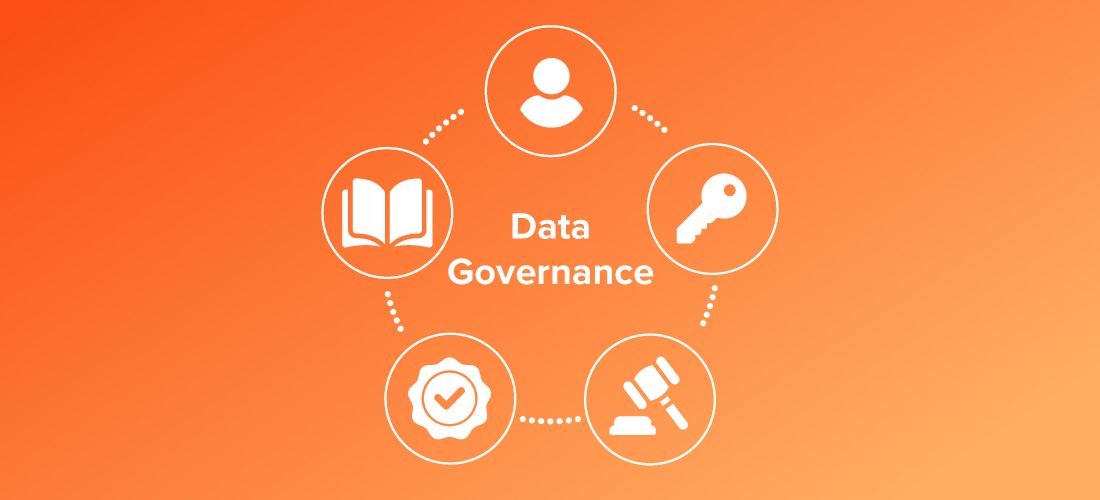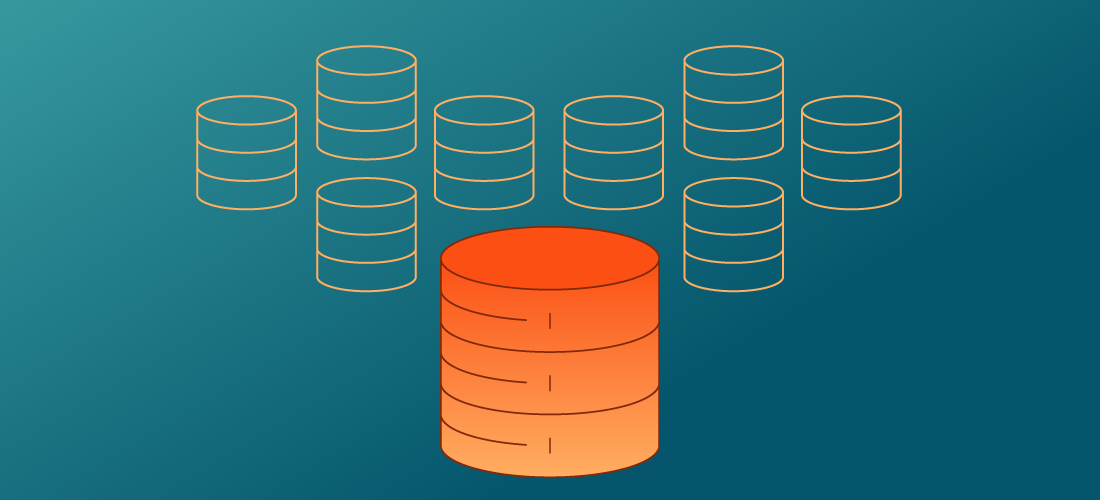
Data governance challenges arise in almost every organization. Data has the potential to be your biggest competitive advantage, so it makes sense to invest in analytics, machine learning, artificial intelligence and other ways of extracting insights from the data an organization produces. But if you don’t have a good data governance framework in place and haven’t emphasized that governance is everybody’s business, then the various challenges that come with data governance can cripple that competitive advantage. To use data as a source of intelligence and a strategic advantage, your data must be easily understood and consumed. But at the same time, you need guardrails in place so that people use data in ways that don’t put the organization at risk.
This article aims to outline the data governance challenges most organizations experience and describes how to overcome those challenges.
1. Understanding the business value of data governance
Organizations are constantly generating data. The sheer volume of data in modern organizations requires digital transformation initiatives to manipulate and serve up that data. Business managers reflexively see value in, say, getting data a half-day faster, but they don’t reflexively see value in getting data that is well understood and properly controlled, with guardrails. One of the key data governance challenges lies in demonstrating to them that the extra half-day of speed doesn’t ultimately buy them anything if they don’t have data quality or an idea of where that data is being sourced.
Understanding the business value is especially challenging in older, established organizations that are adopting digital transformation more slowly. However, an advantage of implementing digital transformation is the ability to share relevant data with entities like employees, customers and vendors. This data democratization holds potential for moving the business forward, but it relies heavily on having the guardrails of data governance in place.
One solution has been the emergence of the chief data officer (CDO). This role started as a data-focused, right-hand person working for the chief information officer (CIO). With time, the CDO has risen to peer status with the CIO, and is tasked with making sure that the organization’s thirst for data is quenched efficiently. That entails rolling out an architecture and a data platform that enforces data governance and keeps it top-of-mind.
The analytics group can also reinforce the business value of data governance. Often, this group is affected the most by low-quality, misunderstood, or misused data, as they are frequently charged with delivering insights, upon which crucial decisions are made.
2. People think IT owns the data
In the early days, many organizations relegated data governance to IT, thinking it was a matter of putting rules in place and restricting access to data. But data governance was rarely prioritized, and didn’t survive IT budget cuts because it was not treated as having real business value.
One of the related data governance challenges is the widely held belief that IT owns the data and is consequently responsible for its governance. Much of data governance is an effort to clarify who really owns data. The idea that IT owns data — and, therefore, data governance — is an obstacle to digital transformation. In any decision about data, the first consideration is the business perspective, with IT enabling that decision afterwards. To better illustrate, consider the role of the database administrator: DBAs own the database, but they don’t own the data itself. Their remit is limited to administering the vehicle that holds the data.
IT should not be making decisions about implementing solutions that affect data without talking to the business about the impact of those solutions. That would be going backwards, in an unsustainable process.
So, to achieve success, smart organizations have moved data governance back into the business, started showing stakeholders the risk of not having it, and started demonstrating value it can bring to an organization. They’ve also started defining data ownership, which sits with the managers in the business organization. A large utility in the European Union successfully made this shift, and realized savings of 30% on external data management costs, 50% reduction in data discovery time and 8 million
Euros in business impact saved in first 18 months. It’s not a matter of who owns Oracle data or who owns SQL Server data; it’s a matter of sales owning sales data, marketing owning marketing data and so forth.
To overcome this data governance challenge, a best practice would be to appoint a data steward who works with a DBA to provide access to that data. That ensures that you’re neither giving people random access to data nor fighting logjams with DBAs.
3. Limited or misallocated resources
Once the C-suite sees that data governance is important, the business is driving governance and IT is responding, the next data governance challenge becomes limited resources and misallocated resources. Whom will you get to take on the new roles of Data Owner and Data Steward?
Ideally, when data governance is up to full speed and full scale, those roles are filled by dedicated employees. Designating a data owner isn’t as difficult because it means having a senior-level decision maker make a few more decisions. But finding a data steward is trickier.
The shortage of skills is a big obstacle to achieving ROI in data governance, so most organizations try to train somebody with tribal knowledge to be data steward. As most organizations start out, the role of data steward is a part-time job staffed by somebody on the business side who frequently works with data. On the IT side, it’s usually a data architect or data analyst with additional, part-time responsibilities. Business analysts and business intelligence (BI) specialists are good candidates for data stewards because they’re familiar with the data and with the technical folks on the team.
Your road map and plan should ensure that, once you’re demonstrating the ROI of data governance, you start to dedicate people to these roles. Large organizations further down the road may have eight to 10 dedicated data stewards who cross the lines of business.
For organizations without the resources to have full time data stewards, one solution is to use consultants; not IT consultants or outsourced developers, but data governance professionals from specialty firms. Some consulting firms are building practices around data governance experts who can fill those roles. At a small scale and for a limited period of time, it’s a great way to achieve early success.
4. Siloed data
In many ways, siloed data happens because of different approaches to data operations and versions of technology. One of the things that most companies avoid whenever they modernize is figuring out how to migrate their systems holding legacy data. Those systems still do the job, and ripping and replacing them is prohibitive. Additionally, if you don’t know what’s that legacy data contains, then it’s less of an expense to try to solve the problem through downstream integration.
For example, traditional relational databases replace a lot of what was on the mainframe. They speed up transaction processing but require highly structured data. So, what do you do with all your new, unstructured data like video and social media? You can put it into NoSQL databases, but that creates a new silo, so you turn instead to hybrid databases that offer the best of both worlds in one database.
Data silos are a natural phenomenon. Think of them from a business perspective. Often, the business itself is siloed, and the people focused on transactions don’t communicate with those focused on strategy. You’ve already got silos around Marketing, Sales, Manufacturing, Engineering and so on, so it makes sense that their data would be siloed as well
Breaking out of those silos is key to further leveraging the data an organization produces.
One solution is to collect all of the information about the different types of data on different technologies for different uses by different parts of the business. With the right data governance tools, you can connect the metadata of different data types and see it in a uniform fashion. You can then map the architecture of your infrastructure and keep it updated more dynamically than if you tried to capture it in static documentation. You replace your documentation by collecting it from the database instance itself, then bring it into an environment where you can analyze it and make it useful.
Metadata management is fundamental to successfully operationalizing data governance. Business users, of course, do not care whether the data resides on Oracle, SQL Server, Mongo DB or any other platform. They only want to understand how the data flows through their business and the point at which it comes to them.
5. Poor data quality and lack of trust in data
Data quality is a data governance challenge because poor quality leads to lack of trust, which leads to lack of use and lack of strategic results. If teams don’t think they can trust the data they are using to make crucial decisions, it leads to data becoming more of an obstacle than an aid to strategic decision-making.
Even if you understand how poor the data is, you can still get good results by making adjustments to account for poor data quality. An important aspect of data governance is identifying where you have poor data quality so you can address it. That leads to greater trust in the data.
At the technical level, these are examples of poor data quality:
- For a particular field in the customer database, 75% of entries are blank.
- Over time, a vendor table accumulates thousands of duplicate rows.
- To test an application, someone generated hundreds of dummy records and forgot to delete them afterwards.
As part of data governance, one solution is to use data intelligence tools to establish metrics and thresholds for data quality and to monitor them. You can also put in place feedback loops so users can report poor-quality data to be cleaned for future use. When you make your efforts to provide transparency on available data your business users, they can decide whether they’re comfortable enough with the level of quality to rely on the data.
6. Poor data context
Pay attention also to the data governance challenge on the other side of the coin: data context. Poor data quality leads to lack of trust, but lack of trust does not necessarily mean that you have poor data quality. It may mean that users aren’t easily able to see what the data really means. Suppose a dataset is labeled “Final sales.” Does that mean “Gross sales” or “Net sales?” Or a batch of records are presented as sales opportunities, but they are in fact actually marketing-qualified leads (MQL).
These examples are not a data problem; it’s a perception problem. The solution is the same feedback loop described above, so that users can communicate questions and doubts about data and you can provide full context.
7. Lack of data control
To return to the relationship between IT and data, organizations that are good at IT but not at data governance generally have too much of the wrong kind of control. Fears about defending your attack surface or protecting your trade secrets leads to shutting out the people who can get the greatest value from the data.
One of the goals of data governance is to avoid turning away the people who will make the most of your organization’s data. It’s not an exercise in saying “no,” but an effort to position yourself to say “yes” with confidence. If you have true control over your data, with the context and understanding that comes from data governance, then you can achieve the right level of control.
Reflexively, companies turn to measures like securing the desktop, the databases and user identities. While those are steps on the right path, you can’t apply them effectively across your data sources if you don’t understand the data landscape. Data governance tools help you to map out what each data asset is for, and what they should and shouldn’t be for.
Conclusion
For companies grappling with these data governance challenges, a four-pronged approach is appropriate:
- People — Designate the right people, with clearly defined ownership, responsibility and sponsorship.
- Process — Launch the right processes to support and maintain everything that goes on in the background of data governance.
- Technology — Data intelligence tools help you mitigate the risks and accelerate the opportunities.
- Culture — Data governance can be woven into your company goals and become part of how you measure success.
For your organization to get the most from its data, that data has to be accessible, manageable and trusted. It must also be used in compliance with regulations and protected against misuse. Robust data governance tools make it easier to discover and understand data, use metadata to demonstrate provenance and reliability and ensure that policies and best practices are followed. A well-implemented data governance program addresses these data governance challenges, and the toolset assures your organization of the confidence to make your data widely accessible yet secure.



